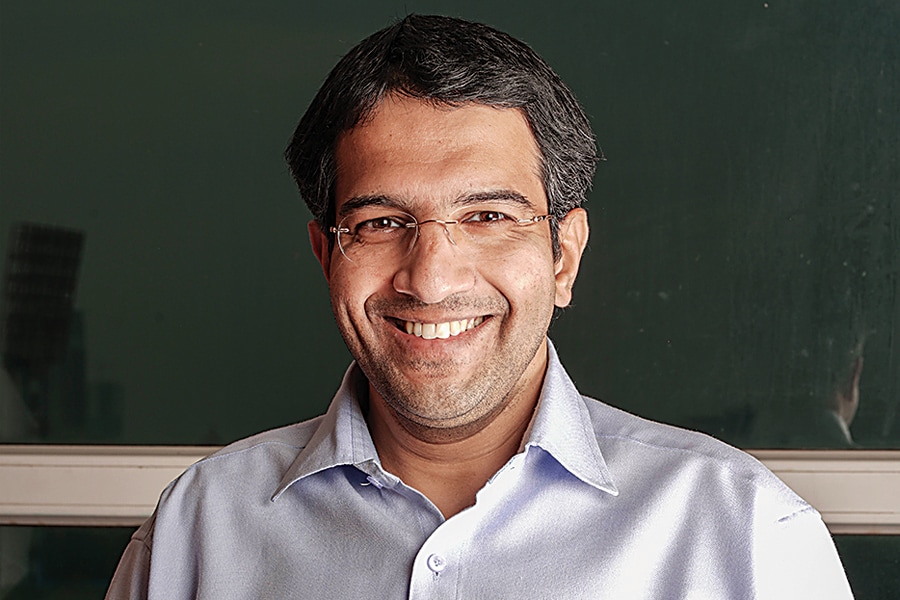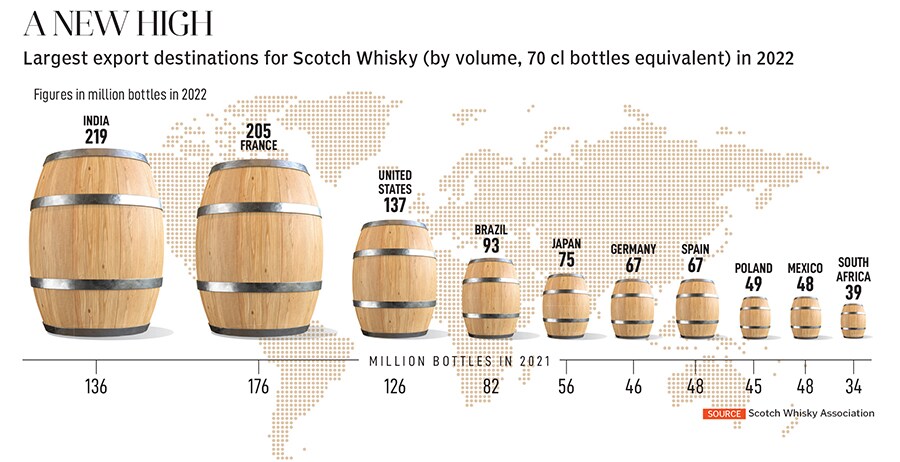Coming of Age: Indian whiskey's moment under the spotlight
Premium Indian whiskies have been gaining global ground, with the likes of Indri, Paul John and Amrut winning accolades and admirers


According to the UK-based Scotch Whisky Association (SWA), India is the world’s biggest Scotch whisky-consuming country by volume, dethroning France from the top spot, and is fifth on the list of the world’s largest buyers of Scotch whisky in terms of value. SWA, which publishes an annual list of countries that consume the most Scotch, both by volume and value, further highlights that Scotch whisky exports to India have grown by more than 200 percent in the past decade alone.
The term ‘whisky’ is derived from the original Gaelic ‘uisce beatha’ or ‘usquebaugh’, meaning ‘water of life’. It is made by fermenting a mash of grains, some of which may undergo the malting process. The grains include barley, corn, rye and wheat, each contributing distinct characteristics to the final product. The whisky is further refined by ageing it in wooden casks, often made of charred white oak, which adds to its complexity of flavours and aromas. Whisky is categorised into single malt and blended varieties, each comprising a spectrum of nuanced sub-varieties.
Novelist and screenwriter Raymond Chandler had said, “There is no bad whisky. There are only some whiskies that aren’t as good as others." Surrinder Kumar, master blender and distiller at Piccadily Distilleries, makers of Indri whisky, which recently ranked number 1 at the Whiskies of the World Awards 2023, agrees. Kumar, who worked at Amrut Distilleries till 2019, is of the view that each whisky brand, Indian or international, brings something unique to the table. When it comes to Indian whiskies specifically, he believes brands such as Indri, Paul John, Amrut and GianChand are bolstering the growth of Indian whiskies and positioning India among the top players around the world.
 John Distilleries
John Distilleries
According to the International Wine and Spirit Research (IWSR) organisation, whisky accounts for nearly two-thirds of spirits sales in India. Kumar says the Indian whiskey sector is experiencing strong expansion, thanks to its innovative offerings. In 2022, the performance of Indian single malts was impressive, with sales reaching just over 2 million cases of 9 litres, he says. “I anticipate this growth rate will soar even higher, approaching nearly 30 percent annually in the years to come."
Premium whisky players in India include Indri, Paul John, Rampur, GianChand and Amrut, while non-premium brands include Blenders Pride and Royal Stag, among others. While some of these brands go back several decades, others were established less than 30 years ago. For example, Haryana-based Piccadily Distilleries started in 1953, when KN Sharma started a liquor company and then a standalone bar in Chandigarh. After venturing into other businesses, such as a restaurant and a theatre, the Sharma family purchased a sugar mill and distillery, and entered the alcohol manufacturing and distillery business in 1994.
Around the same time, Paul P John, chairman of Goa-based John Distilleries, started his own liquor company in 1992 and established John Distilleries in 1996. “My father had been in the alco-bev retail business and I developed an interest for the business fairly young. Over the years, as I travelled and visited distilleries, especially in Scotland, it occurred to me that we in India should be able to produce world-class quality whisky too," says John. In 2008 he set up the malt plant in Goa, which led to the launch of Paul John Indian Single Malts in the UK in 2012. “It has been a great journey ever since." The company’s flagship brand, Original Choice, is one of the top selling brands in India and is one of the top 10 selling whiskies worldwide, with sales exceeding 11 million cases a year.
John Distilleries has won many awards, including the ‘Asian Distillery of the Year’ three times in a row. It is one of the largest liquor companies in the country by volume, and is spread across 18 states in India and 44 countries, adds John.
 Rakshit N Jagdale, executive director, Amrut Distilleries
Rakshit N Jagdale, executive director, Amrut Distilleries
Another big name in the sector, and older than Piccadily and John, is Amrut Distilleries, established in 1948 by Radhakrishna N Jagdale in Bengaluru. In 1972, Neelakanta Rao Jagdale, the company chairman, joined his father’s business and were pioneers in the premium Indian whisky segment. By the late 1970s, the distillery started making malt whisky. On August 24, 2004, Amrut launched India’s first single malt whisky, Amrut, at an Indian restaurant in Glasgow called Cafe India. “The genesis of marketing the single malt whisky was my father’s idea," says Rakshit N Jagdale, the third-generation entrepreneur and executive director of Amrut Distilleries. The whisky was subsequently introduced in India and the rest of the world.
Thrivikram G Nigam, executive director of Amrut Distilleries and Jagdale’s brother-in-law, says in the 1990s, restaurants and bars around the world did not see India-made whiskies to be of great significance. “It was then that Amrut Distilleries decided to launch its premium Indian whisky and made a mark in the premium segment globally." Today, Amrut sells close to 120,000 cases of its single malt whisky in more than 22 states in India and 57 countries, with close to 40 expressions, adds Jagdale.
“The beauty of our whisky is how proudly we make and sell it across the world, without a comparison to other countries. It is a 100 percent Indian product, with Indian touches, distilled in Bengaluru, matured in Bengaluru, and bottled in Bengaluru," says Jagdale. Nigam adds: “We keep learning about whiskies across the world, and don’t take much time to bring those learnings to our offerings."
 Amrut premium whisky
Amrut premium whisky
John sees competition differently. “In my view, we are not in a state of competition, as we are all committed to building the Indian single malt category for India and the world. The Indian single malt players have consciously created our distinct narratives, drawing from our provenance of vast Indian heritage and hence do not compete with each other."
Amrut has appointed distributors for global sales, while in India it distributes its own whiskies. John Distilleries has set up a strategic partnership with Sazerac, an American beverage company, which distributes its products in the US, the UK and Australia. “We have dovetailed our distribution with Sazerac distributors world-wide. It benefited us to leverage the combined strength of the portfolio," says John.

Amrut plans to enter new geographies, and recently entered the South American and African markets. “We want to first increase our footprint in India and then across the world," says Nigam. It also plans to increase its capacity by 30 percent. “I am positive about the future of Amrut and India in the whisky space. I’m sure India will emerge as a strong competitor in the world market, producing quality liquids," Jagdale says.
“The single malt story in India, which started with a lone Indian brand, is now evolving to an Indian single malt category that’s leading the way," John says. Recently, John Distilleries began its journey indexing global whisky markets like UK, the US and Europe to have quicker wins and have also started litmus testing its world-class quality. “We are sometimes met with curious reception or disbelief that we Indians could make whisky. Single malts from India is now the emerging category, along with other regions like Australia, France, Italy and the US, and I have high expectations that the Indian single malt sector will reach great heights."
First Published: Nov 14, 2023, 14:59
Subscribe Now